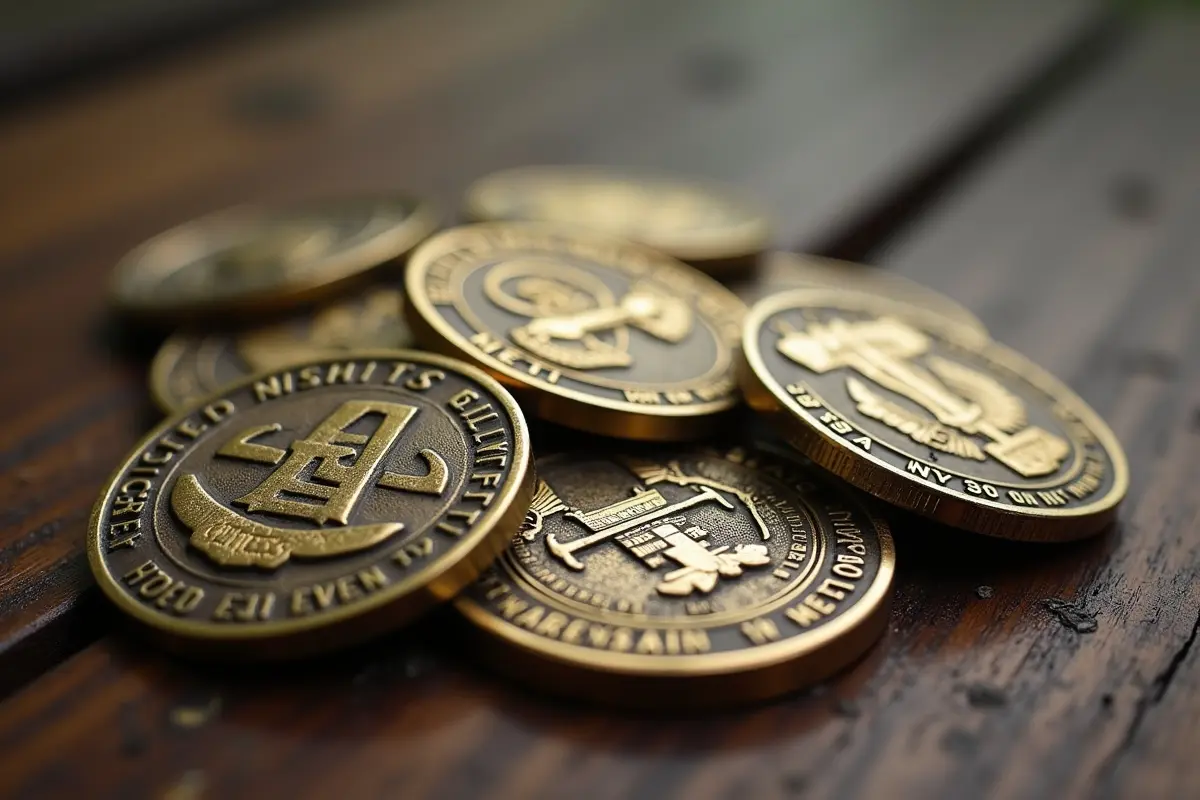Challenge coins are enduring symbols of camaraderie, recognition, and achievement. Whether you are building a collection or embarking on the journey of designing your own, understanding the nuances behind these cherished tokens can elevate your appreciation—and guide you toward more meaningful choices. Organizations, units, and clubs turn to custom challenge coins to immortalize moments of accomplishment and unite individuals through shared memories and values.
From their military beginnings to their widespread adoption in civilian communities, challenge coins continue to connect people with shared histories and aspirations. Their growing popularity has inspired today’s enthusiasts to explore not only historical artifacts but also modern creative possibilities. For anyone interested in these emblematic keepsakes, discovering the evolution and artistry behind them can provide both inspiration and guidance.
History of Challenge Coins
Challenge coins first emerged as military mementos, often used to acknowledge acts of valor, foster unity, and signify membership in a particular unit or group. According to most historians, their roots reach back to World War I, when a lieutenant gifted custom coins to his squadron—a tradition that quickly spread, cementing the challenge coin’s reputation as more than just a souvenir. Today, these coins are embraced by first responders, corporations, and civic groups to honor achievements and strengthen team spirit.
Essential Design Elements
At the heart of every memorable challenge coin lies a careful balance of artistry and symbolism. Design fundamentals include incorporating the organization’s emblems, mottos, or logos to convey identity and significance. Choices regarding shape, color, and iconography should resonate with both the issuer and the recipients. For instance, military coins might feature branch insignias, while organizational coins could highlight key values or dates, ensuring that each piece tells a unique story.
Modern Trends in Challenge Coin Design
Contemporary challenge coins push the boundaries of tradition through innovative shapes, intricate 3D elements, laser etching, glow-in-the-dark enamel, and custom cutouts. These advancements mirror broader shifts in minting technology; according to a recent USA Today report, the introduction of laser-engraved techniques has marked a significant technological milestone in coin production.
The rise of special finishes, such as matte black or dual-metal effects, adds both luster and distinctiveness. Creative personalization and limited edition releases have made these pieces more collectible, as enthusiasts gravitate toward coins with unconventional details and custom craftsmanship.
Collecting Challenge Coins
The challenge coin hobby transcends simple accumulation; it’s shaped by a search for meaningful history and artistic merit. Collectors often seek limited releases, special editions, or those with intricate detailing and connections to pivotal moments or organizations.
The rarity, craftsmanship, and narrative behind a coin often determine its value in a collection. Some collectors specialize by theme—military, fire service, or law enforcement—while others focus on milestone events or commemorative coins, making each collection as unique as its curator.
Personalizing Your Challenge Coin
Adding names, specific dates, or commemorating achievements elevates a challenge coin from a symbolic item to a cherished keepsake. Customization allows organizations and individuals to immortalize personal stories, fostering a deeper emotional connection. Unique elements, such as engraved serial numbers or personal mottos, further personalize coins to reflect individual journeys or shared milestones, turning standard-issue coins into generational treasures.
Choosing Quality Materials and Finishes
Durability and aesthetics are directly influenced by the choice of materials and finishes. Premium metals—like brass, bronze, or nickel—add weight and luster, while antique, satin, or colored enamel finishes can highlight specific details or create dramatic contrasts.
These enhancements not only improve longevity and tactile experience but also make each piece visually striking and memorable. Thoughtful selection ensures that every coin stands the test of time and tells its story with clarity and pride.
Practical Tips for Designing Your Challenge Coin
- Strive for a balanced design that keeps both text and imagery legible and visually pleasing, without overcrowding the coin face.
- Utilize both sides of the coin, allowing for layered storytelling or dual symbolism—such as organization branding on the front, and commemorative dates or mottos on the reverse.
- Tailor design choices to suit the coin’s intended audience, ensuring relevance and greater emotional impact.
Collaborating with experienced designers or reputable manufacturers can streamline the process, enhance creativity, and ensure the result aligns with your vision.
Conclusion
The enduring legacy of challenge coins lies in their remarkable ability to represent achievement, community, and historical legacy. By diving into their origins, embracing contemporary design innovations, and customizing each detail, collectors and creators alike can shape stories that last beyond a lifetime.
As symbols of unity and recognition, challenge coins continue to connect individuals to the moments and values that matter most, making each piece an emblem of meaning and pride.




